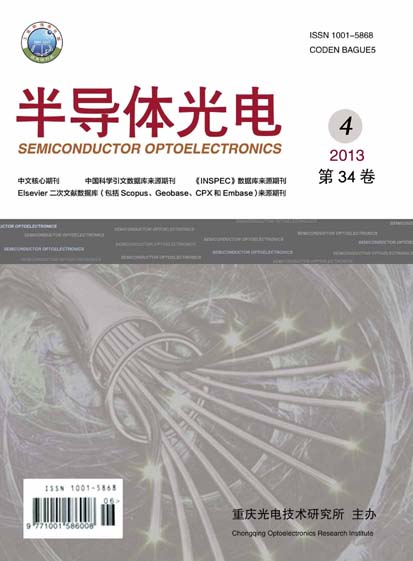半导体光电, 2013, 34 (4): 576, 网络出版: 2013-08-28
远程荧光LED球泡灯热仿真分析
Thermal Simulation Analysis of LED Remote Fluorescence Bulb
摘要
采用FloEFD流体分析软件分析了改变LED散热器翅片数和基板厚度对LED球泡灯热量的影响。首先对LED芯片进行仿真, 然后用蓝宝石替换LED芯片其他部分简化后仿真, 将两者进行了对比。接着对远程荧光LED集成封装光源进行了热模拟, 发现将大功率芯片集成在铝基板上, 工作时产生的热量非常大, 模拟时芯片的结温在159.9℃, 超过了LED正常工作结温, 所以仅仅依靠铝基板难以达到散热要求。最后对LED球泡灯散热器不同翅片数和不同基板厚度分别进行了热仿真, 得出当翅片数为16, 基板厚度为2mm时, LED球泡灯的整体散热良好, 模拟结果显示LED芯片的温度只有83.8℃, 完全满足散热要求。
Abstract
The FloEFD fluid software was used to analyze the changes of LED bulb heat under different number of fins and substrate thickness of LED heat sink. First, simulations were performed on the LED chip, and then sapphire was used to replace the remaining part of LED chips to make simplified simulations. Then thermal simulations were carried out on remote fluorescence integrated package LED light source, in which the high-power chip was integrated on the aluminum substrate. It is shown that the LED during working generates great heat and the junction temperature of the chip is 159.9℃, which is higher than the normal junction temperature, so only using aluminum plate can not meet cooling requirements. Lastly, thermal simulations were performed on LED bulb radiators with different number of fins and substrate thickness. It is concluded that when the fins are 16 and the substrate thickness is 2mm, the LED bulb show good heat dissipation. And the simulation results indicate the temperature of LED chips is only 83.8℃, fully meeting the cooling requirements.
张寅, 赵宝洲, 卓宁泽, 施丰华, 王海波. 远程荧光LED球泡灯热仿真分析[J]. 半导体光电, 2013, 34(4): 576. ZHANG Yin, ZHAO Baozhou, ZHUO Ningze, SHI Fenghua, WANG Haibo. Thermal Simulation Analysis of LED Remote Fluorescence Bulb[J]. Semiconductor Optoelectronics, 2013, 34(4): 576.




